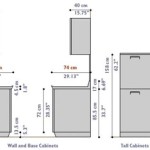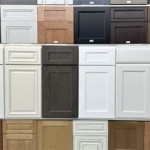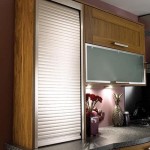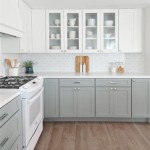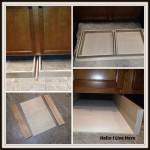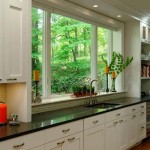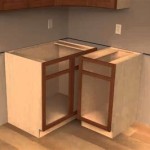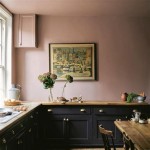Kitchen Cabinet Knobs in the Middle of the Door: Considerations and Guidelines
The placement of knobs on kitchen cabinet doors is a seemingly minor detail that can significantly impact both the aesthetics and functionality of a kitchen. While traditional placement often involves positioning knobs in the corner or along the edge of the door, placing knobs in the middle of the door offers a distinct visual and practical alternative. This article explores the various considerations when contemplating the placement of kitchen cabinet knobs in the middle of the door, providing guidance to help homeowners, designers, and contractors make informed decisions regarding this design choice.
Determining the optimal placement for cabinet knobs involves considering several factors, including the cabinet style, door size and construction, and the overall design aesthetic of the kitchen. Middle-of-the-door placement, while unconventional, can be a valid option under specific circumstances and with careful planning. The decision to utilize this placement should be deliberate and driven by a clear understanding of its advantages and disadvantages.
Aesthetic Considerations of Centered Knobs
The visual impact of placing knobs in the center of a cabinet door is arguably the primary consideration. This placement deviates from the norm, creating a more symmetrical and perhaps even modern look. When applied consistently across all cabinets, this symmetry can contribute to a unified and balanced appearance. However, the success of this aesthetic depends greatly on the style of the cabinets themselves.
Slab doors, characterized by their flat, unadorned surfaces, are generally the most suitable candidates for center-mounted knobs. The clean lines and lack of detailing on slab doors allow the knob to become a focal point, enhancing the minimalist design. Raised panel doors, on the other hand, may not be as well-suited. The existing contours and details of raised panels can compete with the centrally placed knob, potentially creating a cluttered or unbalanced look. The visual effect can further be compromised if the knob's size is disproportionate to the panel's size.
The chosen style of knob also plays a crucial role in the aesthetic outcome. Simple, understated knobs often work best in a centered position, allowing the geometric arrangement to highlight the design. Ornate or decorative knobs, while aesthetically pleasing in their own right, can appear overly busy or distracting when centered on a door, especially if the door itself also features intricate detailing. Material selection for the knob must also complement the cabinet finish and overarching design theme. For example, stainless steel knobs could convey a modern feel, whereas bronze or ceramic knobs could evoke a more traditional or rustic ambience.
Furthermore, it's important to consider the heights of the cabinets relative to eye level. For cabinets located at or above eye level, the center placement might become overwhelmingly obvious, demanding visual attention and potentially disrupting the overall aesthetic harmony of the kitchen. In such instances, a more traditional placement, such as in the lower corners, might be preferable to maintain a balanced and visually appealing design.
Functional Implications of Mid-Door Knob Placement
Beyond the visual impact, the placement of knobs in the middle of the door can also have functional consequences. The primary function of a cabinet knob is to provide a point of leverage for opening and closing the door. Placing this point of leverage in the center of the door can influence the effort required to operate the cabinet and the distribution of stress on the door's hinges and frame.
When a knob is positioned near the edge of the door, the force applied is more directly translated into a rotational movement, making it easier to swing the door open or closed. In contrast, a centrally located knob requires a slightly different hand motion and may necessitate a greater force to initiate the opening or closing action, particularly for larger or heavier doors. This increased exertion could become noticeable over time, especially for individuals with limited strength or mobility.
The door's size and weight are crucial factors to consider. For smaller, lighter doors, the difference in effort required may be negligible. However, for larger, heavier doors, the increased force needed to operate a center-mounted knob could place excessive stress on the hinges. Over time, this increased stress can lead to hinge wear, misalignment, and ultimately, door failure. Reinforcing the hinges and door frame may be necessary to mitigate this risk.
Accessibility is another important consideration. While a centered knob might be visually appealing, it may pose challenges for individuals with mobility limitations. Reaching the center of a cabinet door might be difficult for those with limited reach or range of motion. In such cases, a lower or edge-mounted knob might be more accessible and user-friendly.
The type of cabinet also influences functionality. Upper cabinets may be more appropriate for center-mounted knobs than base cabinets. Base cabinets are often situated lower to the ground, which may require bending over further to reach a centered knob. This could lead to inconvenience and potential back strain, particularly during frequent use.
Installation Considerations for Centralized Knobs
The installation process for center-mounted knobs differs slightly from traditional corner or edge placements. Accurate measurement and precise drilling are paramount to ensure a seamless and visually appealing installation. The use of templates and guides can significantly improve the accuracy of drilling and prevent errors that could compromise the cabinet door's integrity.
Before drilling any holes, it's essential to carefully measure and mark the exact center point of the door. Using a measuring tape, find the midpoint of both the width and height of the door. This will provide the coordinates for the center point. It is advisable to double-check these measurements to minimize the risk of errors.
Once the center point is marked, use a drill bit slightly smaller than the screw size provided with the knobs. Drilling a pilot hole before installing the screw will reduce the likelihood of splitting the wood. When drilling, ensure that the drill is held perpendicular to the door's surface to create a clean and straight hole. Avoid applying excessive pressure, as this could cause the drill bit to wander or damage the door's finish.
After drilling the pilot hole, carefully insert the screw and tighten the knob. Avoid overtightening the screw, as this could strip the threads or damage the door. A snug fit is sufficient to secure the knob in place. If the knob feels loose, consider using a slightly longer screw or adding a washer to provide greater support.
If the cabinet doors are made of a fragile material, such as glass or thin veneer, special precautions are necessary. For glass doors, consider using adhesive-mounted knobs instead of drilling, as drilling glass can be challenging and risky. For veneer doors, use a very fine drill bit and apply gentle pressure to avoid splintering the veneer. It's often advisable to consult with a professional installer when working with delicate materials.
Finally, ensure that all the knobs are installed at the same height and alignment across all the cabinet doors. This consistency is crucial for achieving a cohesive and visually appealing design. Use a level or laser level to ensure that the knobs are perfectly aligned horizontally. Any inconsistencies in height or alignment will be visually noticeable and detract from the overall aesthetic.
In conclusion, while placing kitchen cabinet knobs in the middle of the door can be an aesthetically pleasing and functional choice under specific circumstances, it requires careful consideration of various factors. These includes the cabinet style, door size, weight, material, the selected style of knob, and the overall design of the kitchen. By carefully evaluating these considerations and implementing precise installation techniques, homeowners can successfully incorporate center-mounted knobs into their kitchen design, creating a unique and visually appealing space.

Cabinet Hardware Placement Guide

Hardware Placement

A Simple Guide For Cabinet Knob Placement Julie Blanner

How To Cover Old Hardware Holes

Updating 70s Cabinets

How To Place Cabinet Knobs Pulls

How To Cover Old Hardware Holes

A Simple Guide For Cabinet Knob Placement Julie Blanner

How To Place Cabinet Knobs Pulls

Kitchen Cabinet Handle Placement Dos And Don Ts Living Letter Home
Related Posts

